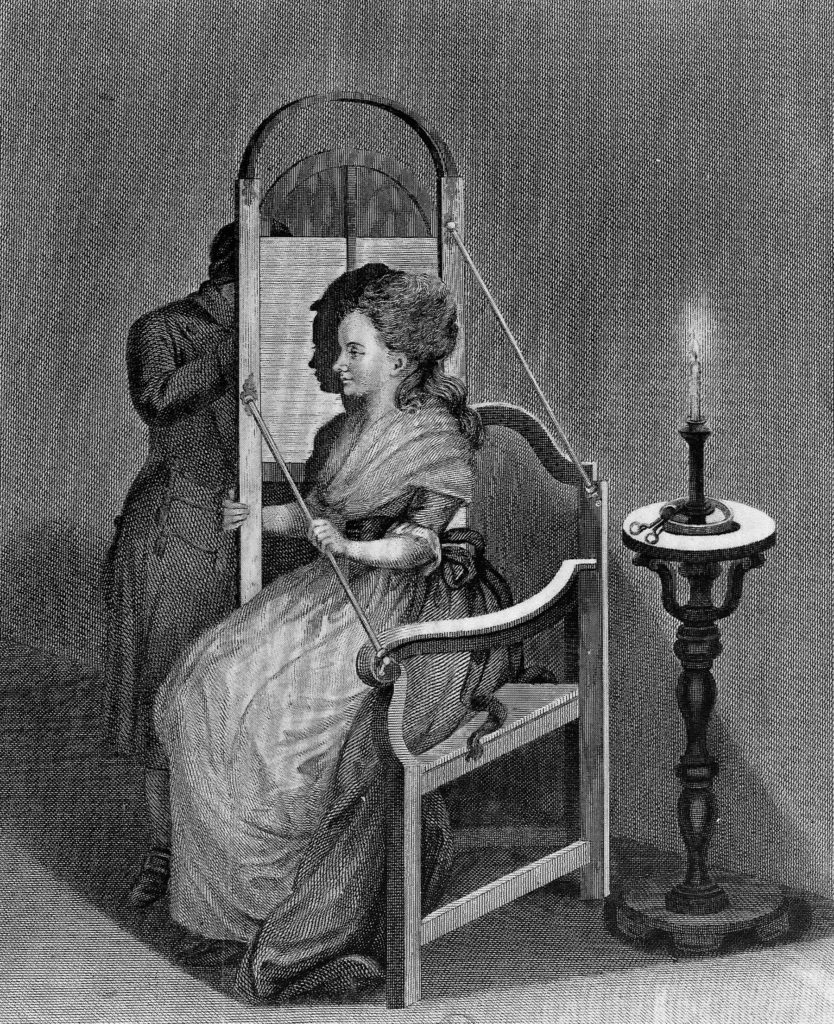From light shadow is born…
Shadow effects, a picture’s basic ingredient, have always enjoyed an indisputable success: a source of light, some gestures evoking shadows on a screen opposite arousing the imagination of young and old… and Bob’s your uncle! “Seditious toys” and canes with knobs shaped in a certain way would produce surprising silhouettes, once their shadows were projected! Cut-outs, whether negatives or positives, or even little shadow theatres all enjoyed their moments of glory, and the Asians were particularly gifted in this field.
Drawing silhouettes using this same principle, or outline portraits of one’s circle of friends and relatives was very fashionable during this period, and a machine designed for this purpose was even invented in 1783 by Johann Caspar Lavater, Swiss author of a treatise entitled “Essais de physionomie” (“Essays on Facial Appearance”), published in 1789. He invited artists and sketchers to “reveal man’s inner self through his outer appearance, to perceive him by means of certain natural signs, which are not immediately apparent to the senses”.


